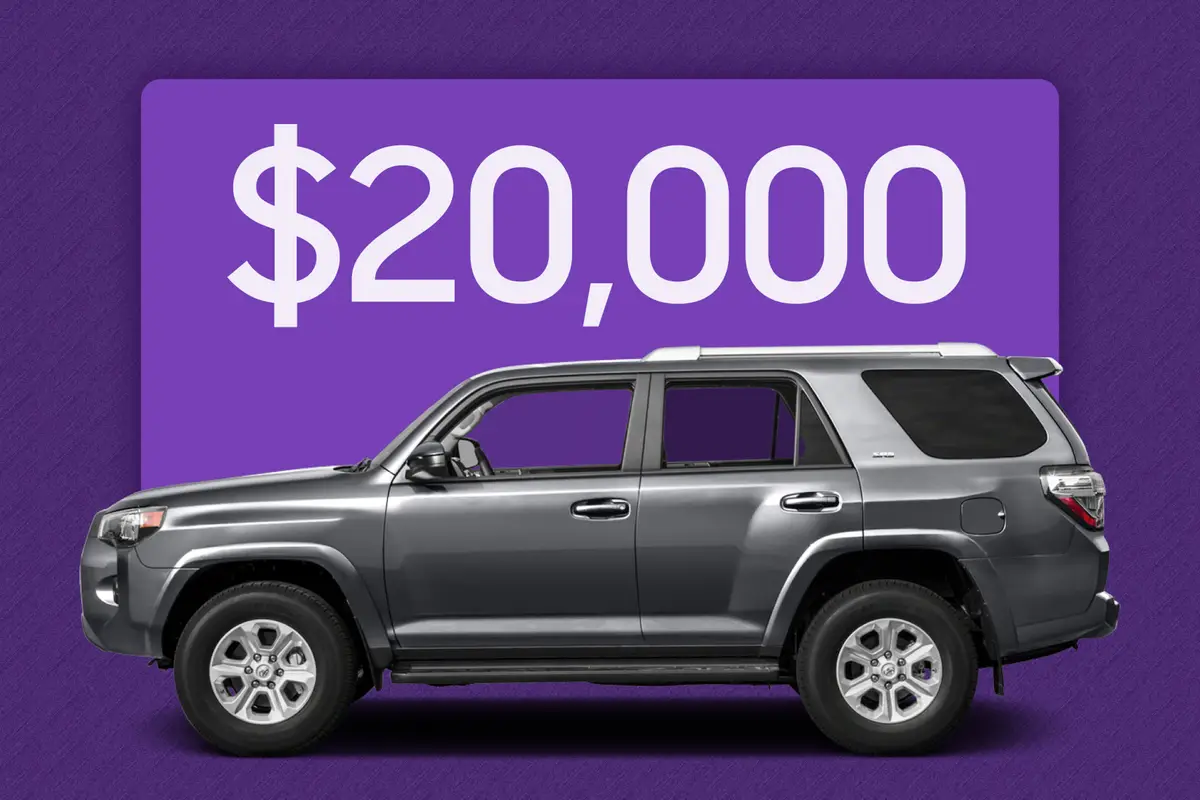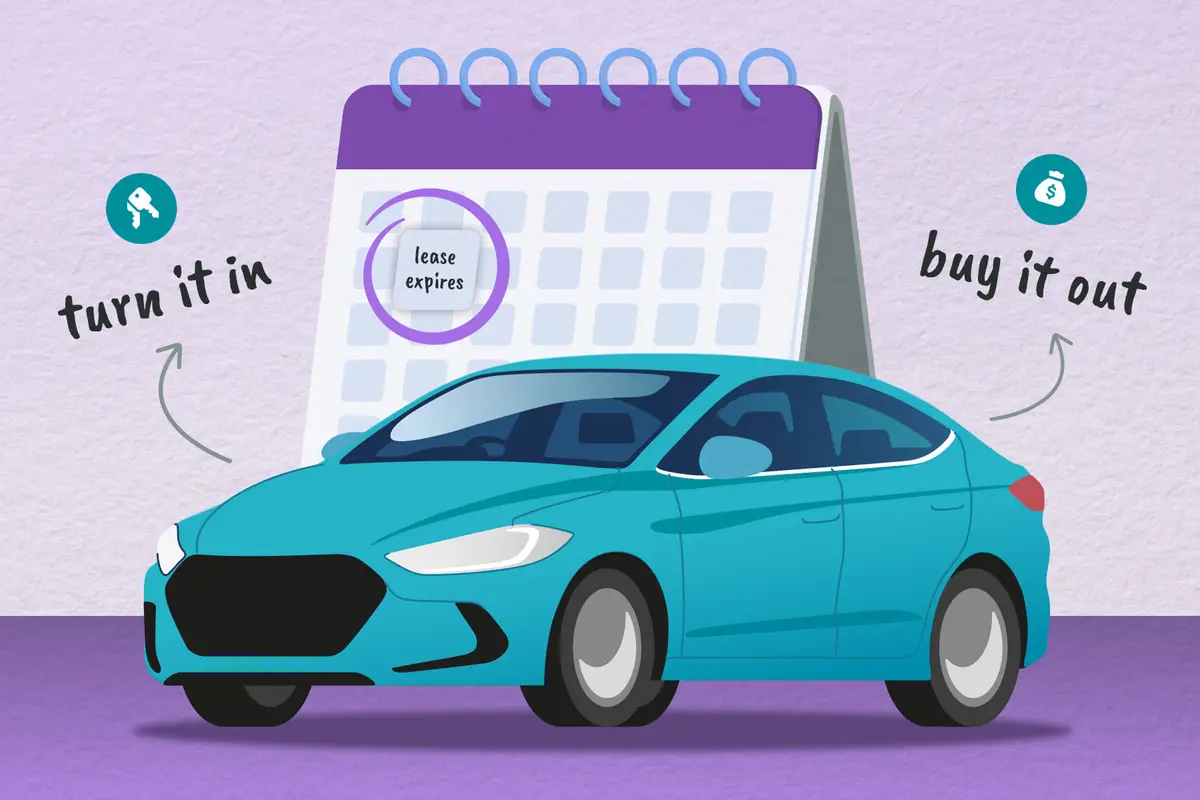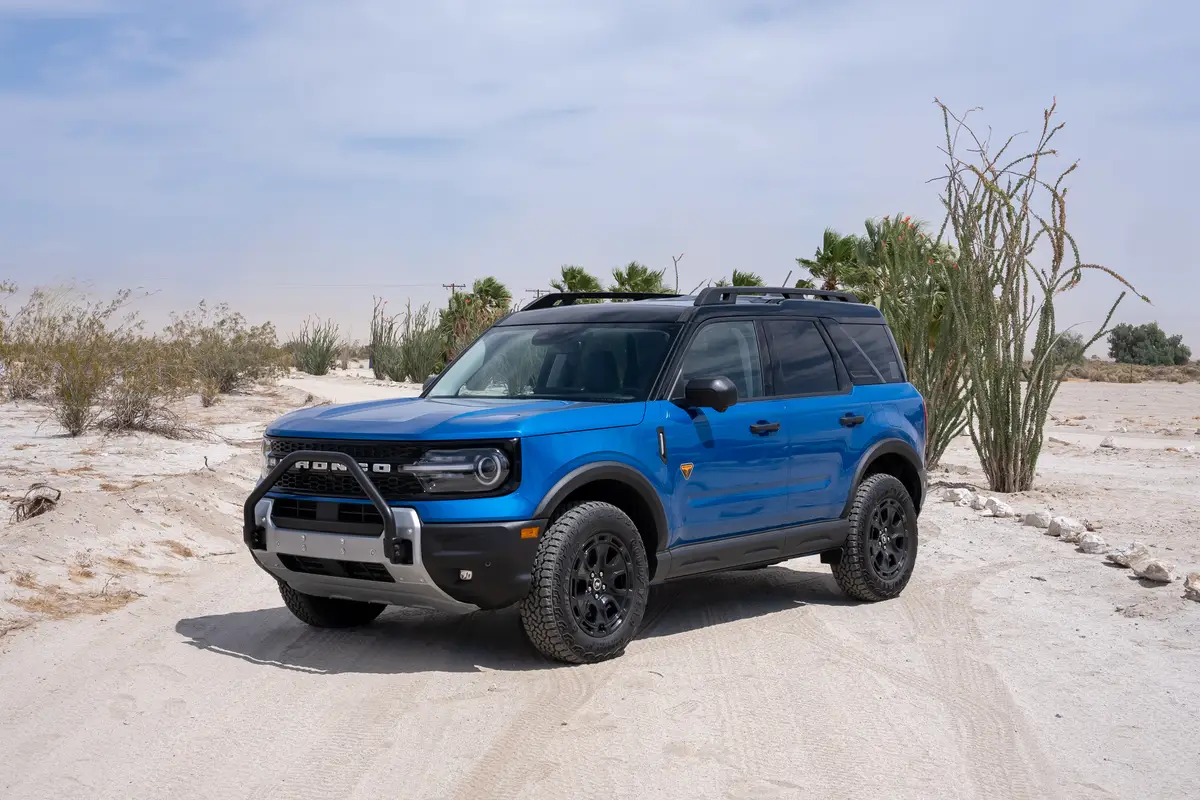How the Subaru Outback Stacks Up Against Midsize SUVs

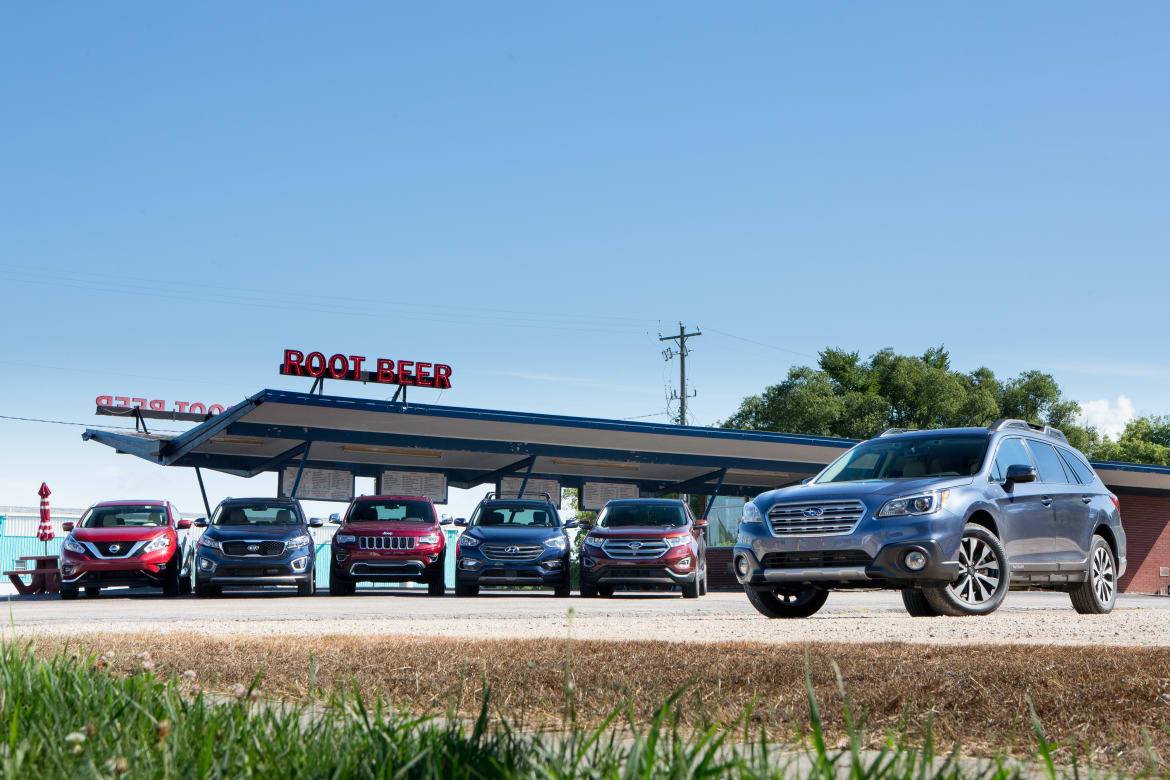
CARS.COM — How does the Subaru Outback compare to popular midsize SUVs? We gave Subaru the same rules as every other automaker involved in our 2016 Midsize SUV Challenge: Provide us with a car that stickers at $45,000 or less, including the destination fee. Subaru did and we put its 2017 Outback 3.6R Limited through the same evaluations as the SUVs: Our experts drove it on back-to-back handling loops, judged everything from seat comfort to cargo capacity, tested how easy it is to install child-safety seats, evaluated crash-test ratings and logged fuel economy on our 145-mile loop.
Related: What’s the Best Midsize SUV in 2016?
How did the Subaru Outback fare in the competition? Pretty darn well. When we added up the scores, the Outback’s 802 points ranked between the first-place Nissan Murano (811) and the next-highest Ford Edge (779). It thumped the Hyundai Santa Fe Sport (706), Kia Sorento (740) and Jeep Grand Cherokee (694).
Subaru would have landed a strong podium finish:
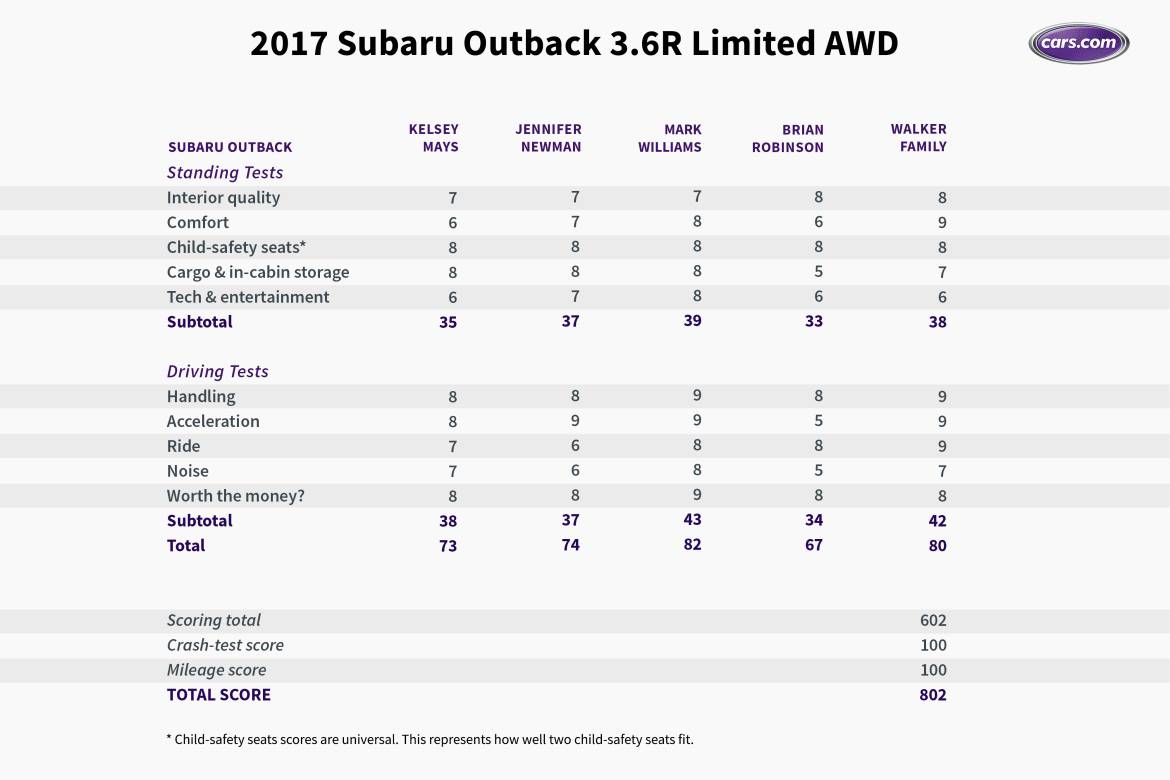
The drivers and judges in our comparison included myself, Cars.com Managing Editor Jenni Newman and Assistant Managing Editor Mark Williams, as well as “MotorWeek” Road Test producer Brian Robinson and two in-market shoppers, Johnny and Marianne Walker, parents of two boys.
Some of our takeaways:
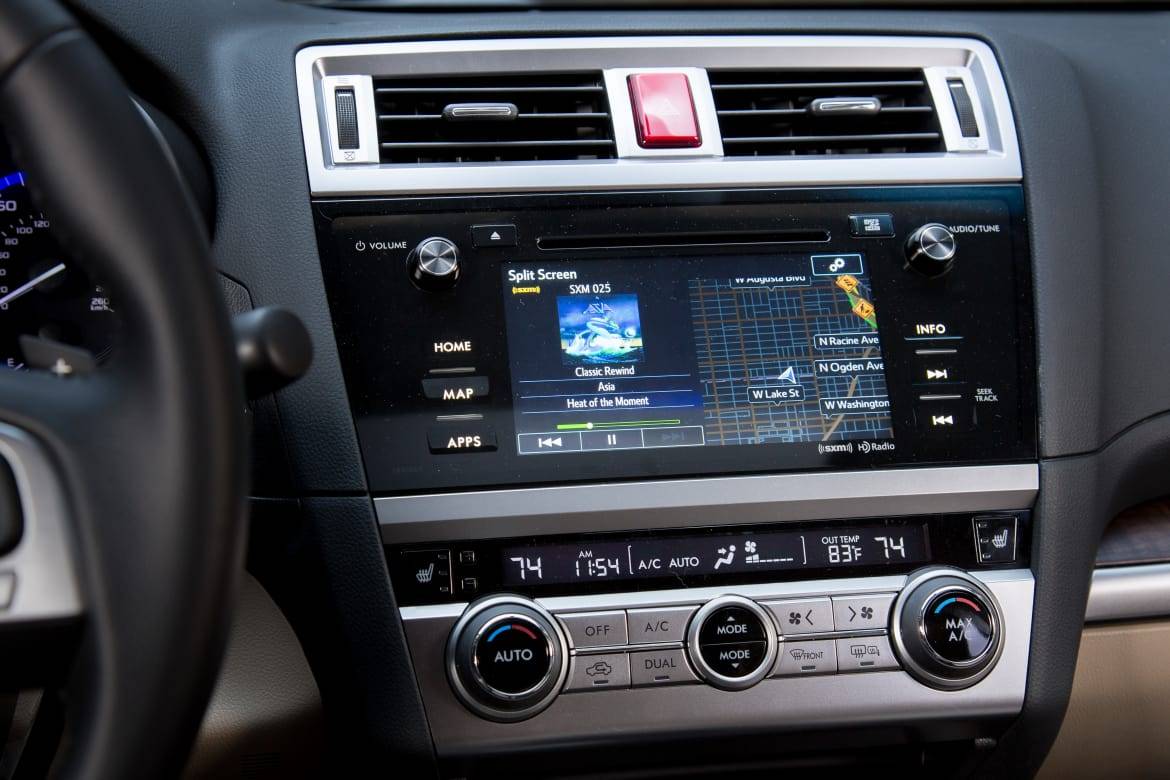
What We Liked
Multimedia system: You can pinch and swipe the Subaru Outback’s 7-inch navigation system at smartphone speeds, even reorienting the map with a spinning-motion pinch. Newman called the multimedia system “easy to use” and I found it to be the only map interface in this group that really mimics a smartphone.
Fuel economy: The Outback’s 26.4 mpg from our mileage drive tied the Edge for the group’s best fuel economy. Subaru has a big-boy fuel tank, too: At 18.5 gallons, it rivaled most of the other SUVs. Road-trippers can travel far without a lot of stops thanks to the combination of high mpg and a large tank.
Value: Our well-equipped 2017 Outback 3.6R Limited came in at $37,465 with destination, making it the cheapest car in the test by more than three grand — and a cool $7,295 below the priciest competitor. “It’s very difficult not to be impressed by the value quotient,” Williams said. “The Outback does a good job of keeping up with the competition here, at $7,000 less.”
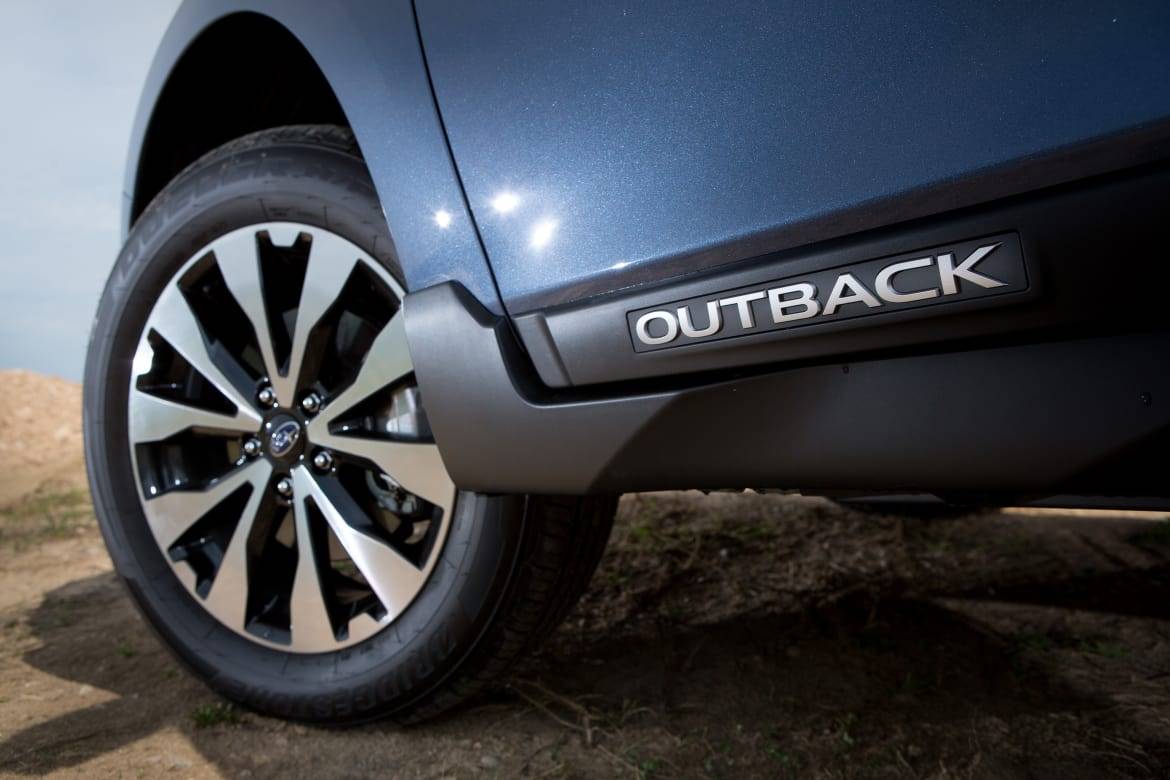
Off-road chops: With Subaru’s excellent all-wheel-drive system and 8.7 inches of ground clearance — nearly 2 inches more than the Murano — the Outback has “more legitimate off-road credentials than most of the crossovers here,” Robinson noted.
Safety: Subaru’s EyeSight system packages lane keeping steering with adaptive cruise control and — perhaps most importantly — a forward collision warning system with automatic braking that garnered top marks in third-party tests. “Subaru does safety right,” Newman said. “Adding the EyeSight safety system to the Outback raised its price by $1,595, but it still kept the overall price to an impressive $37,465.”

Passing power: Most judges lauded our Subaru Outback’s optional 3.6-liter six-cylinder engine, a punchy motor that drives all four wheels through a continuously variable automatic transmission (CVT). “Love the snappy throttle response of the flat-six engine,” Williams said. I thought, “Now, there’s a CVT I can live with.” Prod the gas and it holds ratios to mimic a traditional stepped automatic, whether kicking down or revving and upshifting.
What We Didn’t
Charging power: Our Outback had two USB ports up front but nothing for the backseat. Nor did it have any household-style two-pronged outlets, a feature we found in three competing vehicles. “Families can never have too many USB ports for charging devices,” Newman said. “Subaru needs to get on board with that idea.” Marianne minced few words, calling it “almost unforgivable” that the Outback lacks backseat outlets. “Our boys need to plug in all their devices just about everywhere we go,” she said.
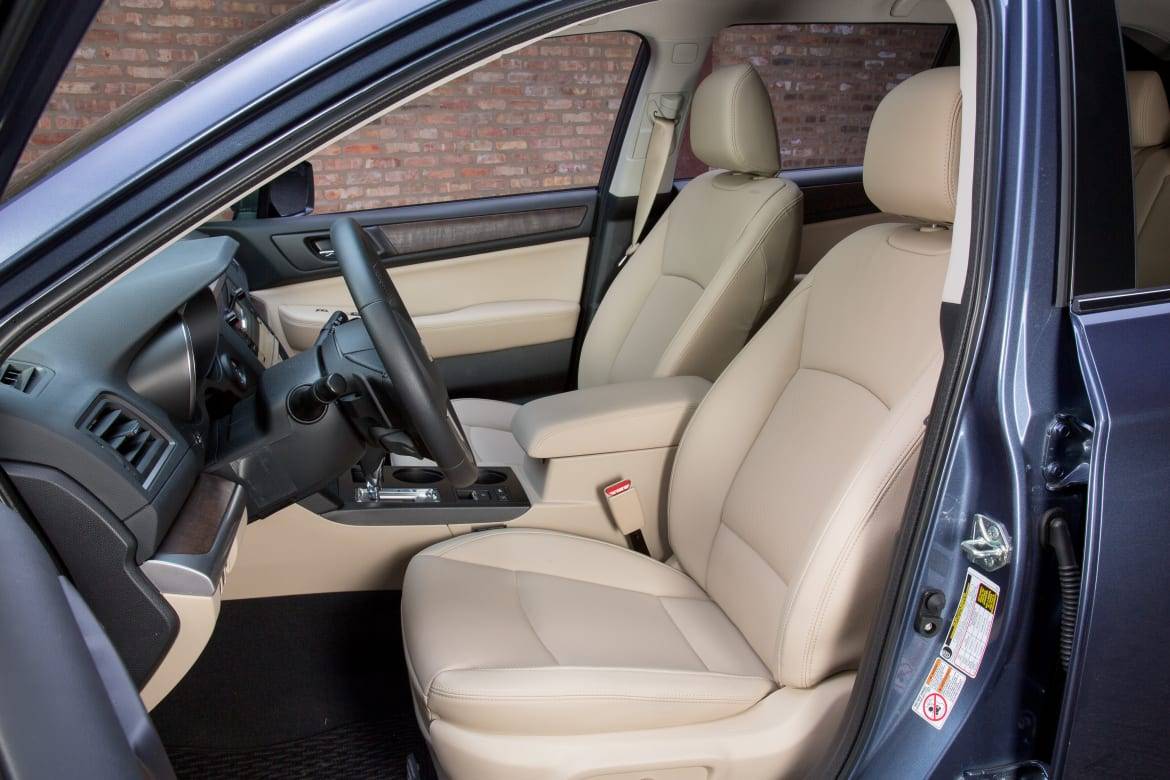
Seat comfort: The backseat penalizes you with a sizeable floor hump, something missing in the other vehicles. Robinson, meanwhile, took issue with the front seats: “While ride quality is very good, poor seat comfort makes for a long day in the saddle,” he said.
Missing features: The Outback’s cheapest as-tested price came at a cost. The Subaru lacked ventilated front seats, a height-adjustable passenger seat and a power-adjustable steering column — features in many of its SUV competitors. The most obvious omission? A panoramic moonroof, something found in every competitor. The Outback used to offer one, but the current generation has only a standard moonroof. It has all the appeal of a ping-pong table at Wimbledon. Newman agreed: “The Outback’s old-school moonroof seems so tiny compared to those in the midsize SUVs,” she said.
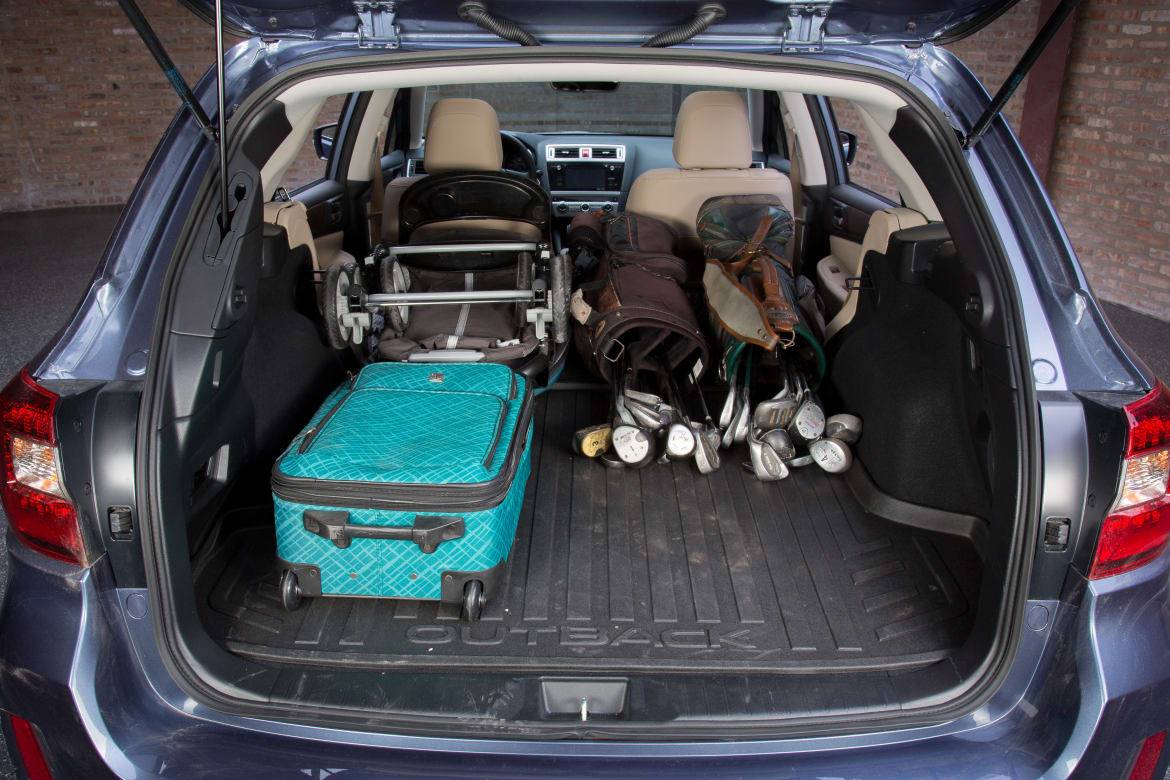
Missing capacity: From cargo area to the center console, the Subaru Outback came up short on storage space. The capacities were modest, too: “Although some may like the fact this is the most ‘car-like’ platform of the group, it does limit its people- and load-carrying abilities quite a bit,” Williams observed. The Outback “weighs the least of the group and has a gross vehicle weight 1,650 pounds less than the Jeep Grand Cherokee, which means it can’t carry much,” he added. Nor could you hitch a lot behind it: The Outback’s 2,700-pound trailer capacity falls about 800 pounds short of most competitors. Robinson noted that you simply “can’t tow much.”
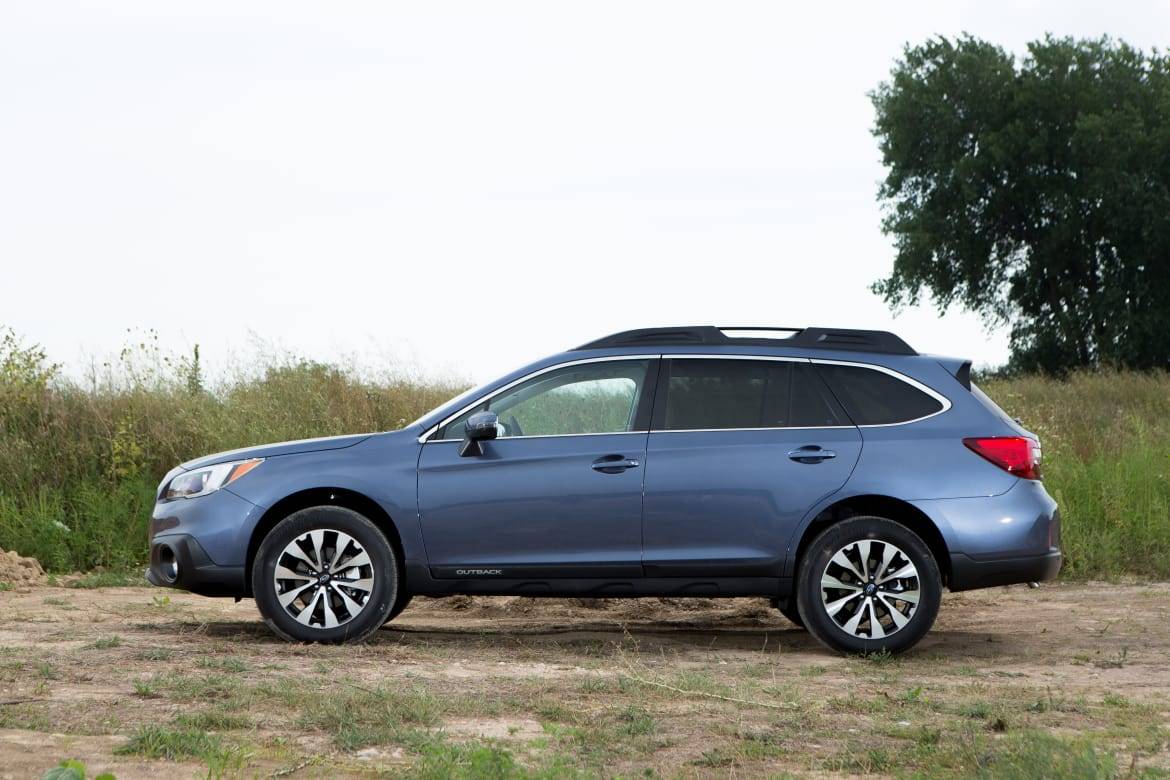
Is the Outback a Legitimate SUV Alternative?
Subaru has pitched the Outback wagon as an SUV alternative ever since it arrived in the mid-1990s. But it’s grown more SUV-like in recent years: In the four redesigns following the 1995 original, the Outback’s height has grown more than twice as fast as its length. In fact, the current model’s height comes almost a half-inch shorter than the Murano.
Parked alongside the other SUVs, the Outback still looks like a wagon — but barely. Is it a legitimate midsize SUV alternative? We posed the question to each expert judge.
“My short answer would be no, but there is a ton of value and capability here,” Williams said. “It’s sort of like asking if the Honda Ridgeline is a legit alternative to a half-ton pickup? It all depends on what you have or want or expect to be doing with your vehicle. The Outback does a good job of looking like something it is not and that will work for a lot of people just fine. But there is less ‘just in case’ bandwidth than some of the more traditional choices.”
Other judges agreed.
Newman declared the Subaru Outback a legitimate, money-saving alternative to many of the midsize SUVs: “Shoppers looking for a midsize SUV should take a serious look,” she said. (Full disclosure: Newman owns a 2013 Outback.)
I also agreed but with caveats: Its road manners and ride height are more akin to a car than an SUV. The Outback is a legitimate alternative but only if you can handle a lower driving position. If you’re looking for a utility vehicle in the classic sense, the Outback might not cut the muster.
Robinson said it’s “absolutely” a midsize SUV alternative because, well, real SUVs are rare these days.
“With the exception of the Jeep Grand Cherokee, all of the SUVs here are really just jacked-up wagon crossovers,” he said. “So unless you need a real SUV to do real SUV things, you might be better off with something like this Subaru Outback; you’ll save a few bucks as well.”

Former Assistant Managing Editor-News Kelsey Mays likes quality, reliability, safety and practicality. But he also likes a fair price.
Featured stories
